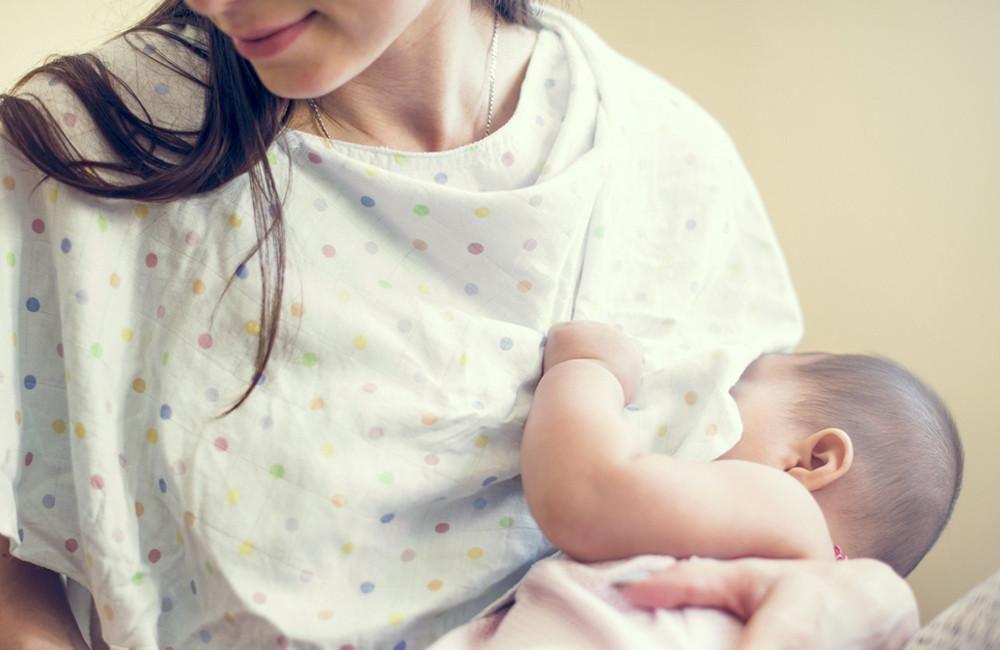PREGNANCY
Healing ‘Down There’ After Birth: Stitches, Bleeding & Hemorrhoids
These tips will help you heal after delivery.

Written by
Happiest Baby Staff

SHARE THIS ARTICLE
PARENT PICKS
Bestsellers
PREGNANCY

Written by
Happiest Baby Staff

SHARE THIS ARTICLE
Bestsellers
No matter how you give birth…vaginal or caesarean, at home or in a hospital, after 36 hours of labour or a single blink-and-you-missed-it push…your body is going to experience some uncomfortable—or painful—after-effects.
New mum, model, and actress Chrissy Teigen pulled back the curtain when she tweeted, “No one told me I would be coming home in diapers too.” She even shared a hilarious picture of her “push present:” a perineal irrigation bottle!
buying myself a push present pic.twitter.com/LmONcG9GHD
— christine teigen (@chrissyteigen) April 20, 2016
Chrissy “won the Internet” for talking about something that many new mums do not: body issues that can seem too personal, too private, or even too embarrassing…to discuss. In fact, what happens after delivery can take a lot of women by surprise.
During the days and weeks after birth, your body goes through a healing process that is totally normal and natural! With a little know-how and a well-stocked bathroom cabinet, you will be on the road to recovery in no time.
The female body is made to give birth…but ouch, it still hurts. After a vaginal delivery, all mums should expect some pain, soreness, bruising, or swelling in the vagina and perineal area; you might feel it especially while sitting or moving around.
Some mums have vaginal tearing as the baby enters the world. After all, by the time your baby is ready to be born, her head is the size of a melon! Depending on the tear, your midwife may stitch you up in the delivery room. You will heal and the stitches will dissolve on their own in a few weeks, but some stinging or burning is common.
If your midwife needs to assist you in delivery—by using a vac or forceps, or giving you an episiotomy—these steps can mean greater injury to your body. (That is why it is a good idea to discuss these options with your midwife in advance of your delivery.)
Sorry, mums. This trifecta is unavoidable—even after a C-section.
Starting right after delivery, your body will begin to shed blood and parts of the uterine lining called lochia. The bleeding and discharge are heaviest in the first few days following birth and diminishing amounts can last 5-10 days with light discharge or spotting continuing for 4-6 weeks. (Discharge is typically lighter with C-sections). Check with your healthcare provider if the bleeding is not substantially reducing after a few days.
You can also expect abdominal cramping—much like period cramps, or mild contractions—as your now baby-free uterus shrinks back to normal size.
If you think pushing out a baby is scary, just wait for the first time nature calls after delivery! Plenty of new mums experience a little “fear of pooing” after birth, and can wind up constipated as a result.
No two ways about it…these are a bummer. Postpartum hemorrhoids are swollen veins in the rectum usually caused by straining—like when you are chronically constipated…or have a baby putting pressure on your abdominal veins for months! And despite being such a common side effect of pregnancy and delivery, your hemorrhoids after birth may catch you by surprise.
You thought pregnancy meant a lot of trips to the bathroom! Many postpartum mums experience a frequent need to pee, as the body starts to lose all the excess fluid that built up during pregnancy.
Some women also have trouble stopping the flow. In fact, the strain of vaginal delivery can cause mild incontinence for new mums (which you might learn the hard way after a big laugh or sneeze!)
In between all those stops at the paediatrician’s office, do not forget to visit your midwife for a postpartum check-up! That usually happens at 6 weeks, when mums are typically given the green light to start having sex again. Many mums also talk birth control at this visit…not everyone is ready to put their body through all that again immediately!
Disclaimer: The information on our site is NOT medical advice for any specific person or condition. It is only meant as general information. If you have any medical questions and concerns about your child or yourself, please contact your health provider. Breastmilk is the best source of nutrition for babies. It is important that, in preparation for and during breastfeeding, mothers eat a healthy, balanced diet. Combined breast- and bottle-feeding in the first weeks of life may reduce the supply of a mother's breastmilk and reversing the decision not to breastfeed is difficult. If you do decide to use infant formula, you should follow instructions carefully.